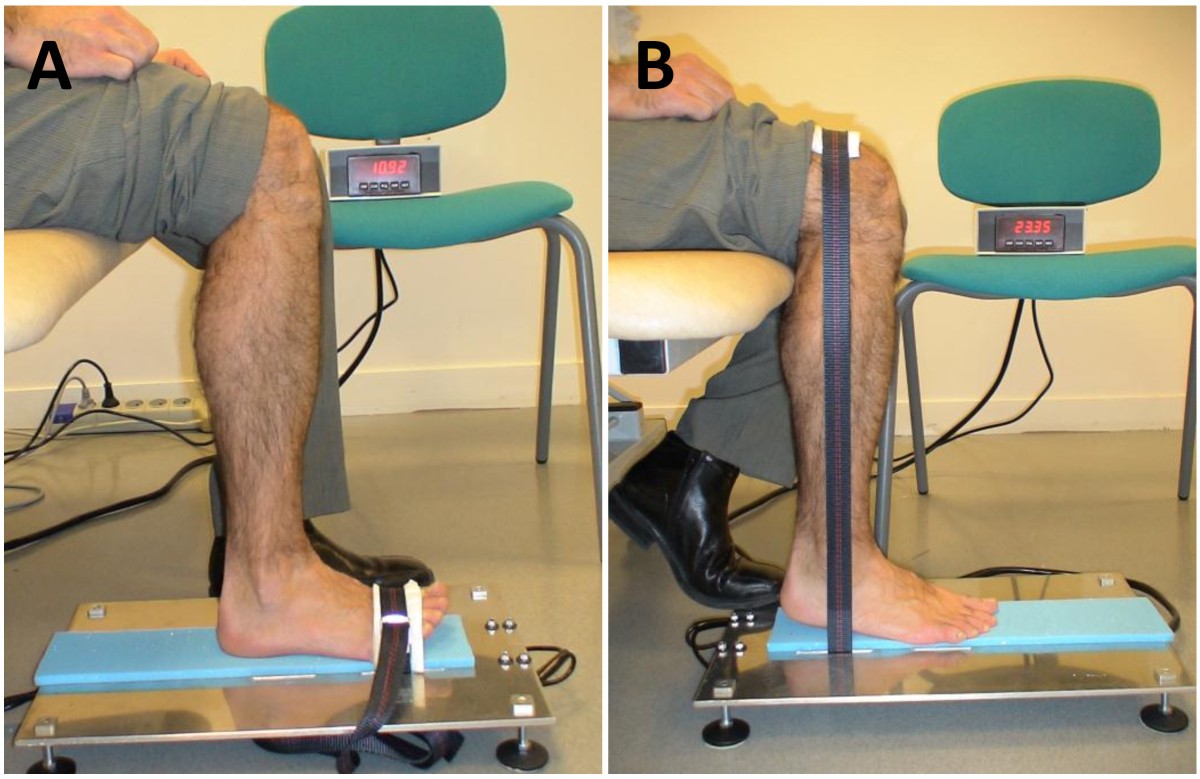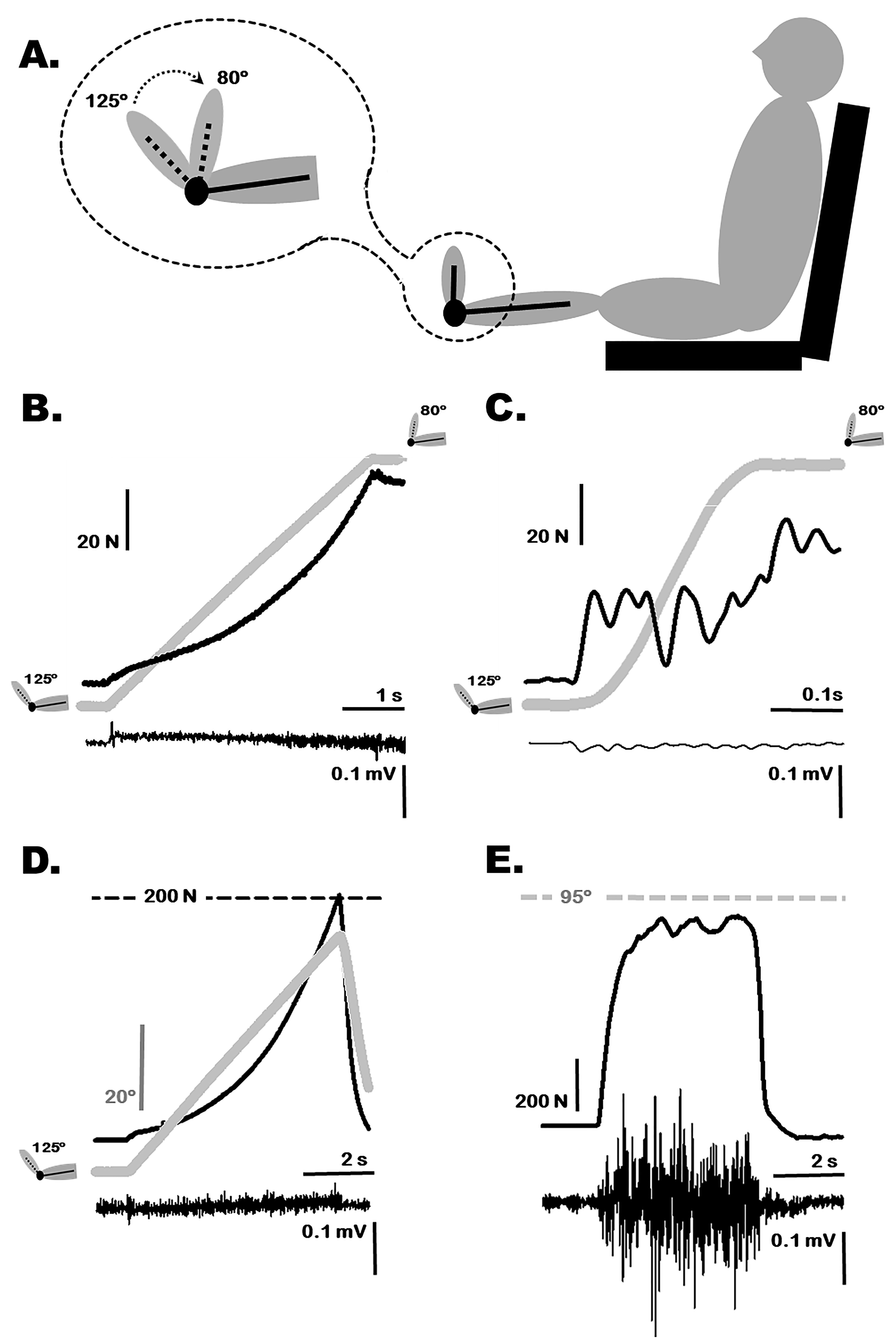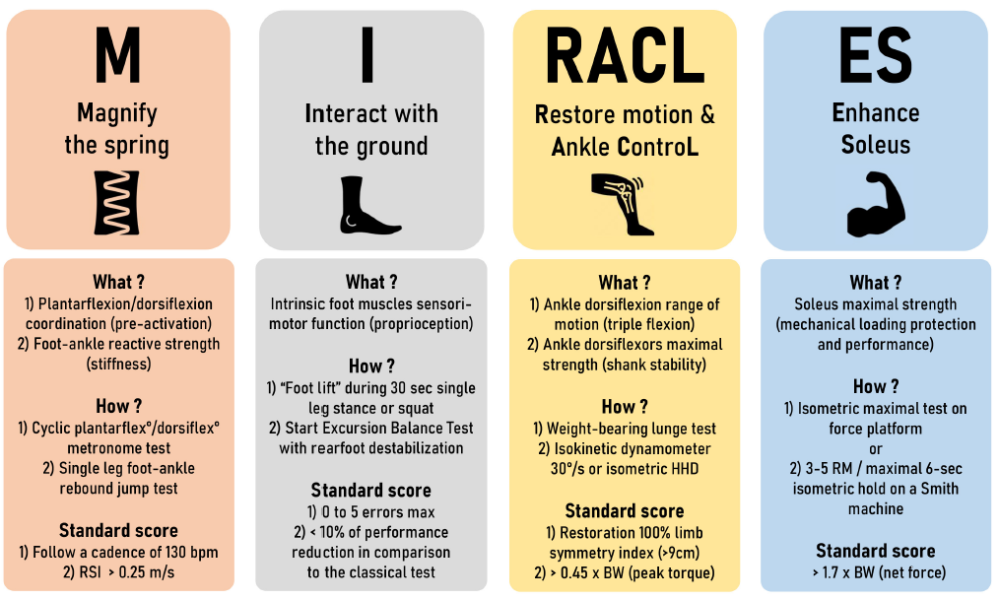Ankle dorsi- and plantar-flexion torques measured by dynamometry

Background Ankle strength is often impaired in some of the most common neuromuscular disorders. Consequently, strength generated around this joint is important to assess, because it has a great impact on balance and gait. The objectives of this study were to establish normative data and predictive equations for both ankle dorsi- and plantar-flexion strength from a population of healthy subjects (children and adults), to assess the reliability of the measurements and to study the feasibility of using a novel dynamometer on a group of patients with a neuromuscular disorder. Methods Measurements of maximal isometric torque for dorsi- and plantar-flexion were performed on 345 healthy subjects from 5 to 80 years of age. The feasibility of the method was tested on nine patients diagnosed with type 2A limb girdle muscular dystrophy. Results The results documented normal strength values depending on gender and age on ankle dorsi- and plantar-flexion. The reliability of the technique was good with no evaluator effect and a small learning effect. The dynamometer was found suitable in the group of patients, even very weak. Conclusions The device developed was both reliable and accurate in assessing both ankle dorsi-flexion and plantar-flexion torque measurements from weak patients and children to strong healthy adults. Norms and predictive equations are provided for these two muscle functions.

Differences in torque values between dominant and non-dominant sides

Test-retest reliability and responsiveness of a comprehensive protocol for the assessment of muscle tone of the ankle plantar flexors in healthy subjects - IOS Press

PDF) Passive stiffness characteristics of ankle plantar flexors in

Aspetar Sports Medicine Journal - THE ROLE OF FOOT-ANKLE COMPLEX

Sensors, Free Full-Text

Frontiers Effects of Changes in Ankle Joint Angle on the Relation Between Plantarflexion Torque and EMG Magnitude in Major Plantar Flexors of Male Chronic Stroke Survivors

PDF) Test-retest cross-reliability of tests to assess

Isometric dorsiflexor torque measurement with the ankle in neutral

How the ankle joint angle alters the antagonist and agonist torques during maximal efforts in dorsi‐ and plantar flexion - Billot - 2011 - Scandinavian Journal of Medicine & Science in Sports - Wiley Online Library

Sensors, Free Full-Text











